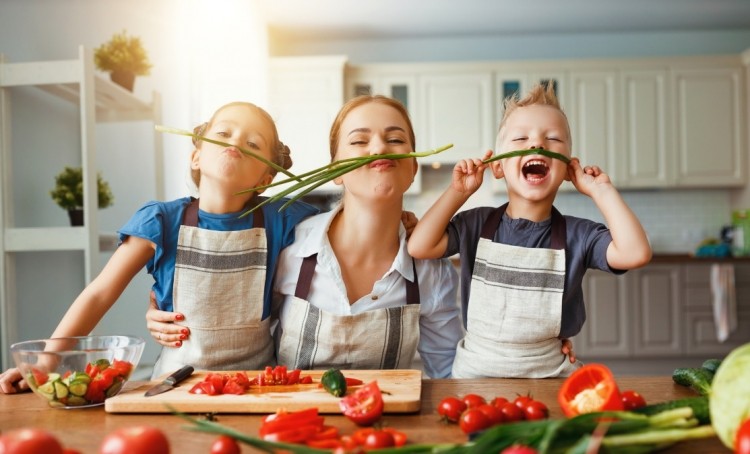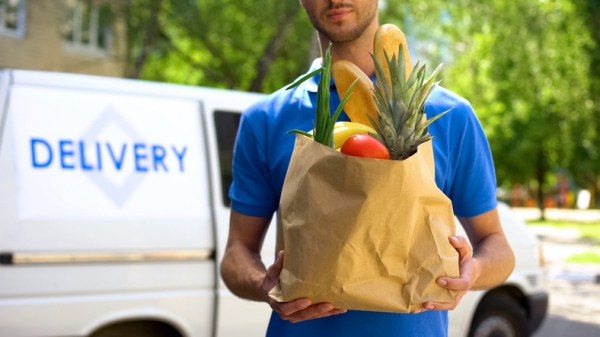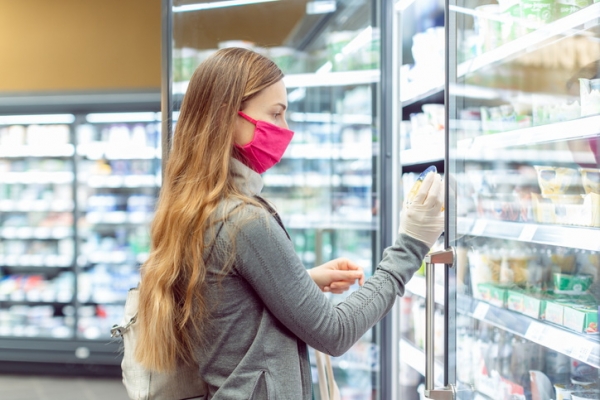What food trends will stick post-COVID? ‘The world’s going to become more demanding than it was during the pandemic’

Nobody is in any doubt about the seismic impact COVID-19 and global lockdowns have had on the consumer-packaged goods sector. We have seen demand-driven shifts re-shape the global grocery market, from initial panic buying that emptied shelves to the rise of scratch cooking, increased snacking, and active dieting.
The question hot on everyone’s lips at this year’s Consumer Goods Forum Global Summit was: Which of the many new consumer behaviours will stick as the world begins to emerge from lockdown?
For John Ross, President and CEO of global retailer IGA, COVID-19 fundamentally shifted the role that retailers and manufacturers play in consumer lives. “If you were picking a word to describe consumer sentiment… the word would be fear,” he told the digital audience.
Fear of the virus and infection, certainly, but also fear of food and economic security. This fear caused some immediate ripples – like panic buying – and some new ways of shopping that, Ross said, IGA is continuing to witness. In particular, he pointed to the tendency for people to make fewer, larger shopping trips.
“A question for this industry – manufacturers and retailers – could be what business are we in? It may turn out that we are not in the logistics business, or the retail business, or the services business. We may be in the confidence business. It may be our job to make sure all the ways we serve that shopper make them feel smarter, make them feel more informed and more confident that they can make these choices for their families.”
As we emerge from this period shaped by fear, Sven Smit, a Senior Partner at McKinsey & Company, said that - in many respects - confidence is returning quickly. Smit believes that this next phase of economic development should be viewed as one of opportunity with consumer spending – supported by ambitious economic interventions across the western world – demonstrating an elastic ability to snap back to pre-COVID levels.
“The consumer was impacted last year significantly, there was a deep drop in discretionary spending… Then we did something in the western world and some parts of Asia, which was to stimulate the economy with the largest [fiscal support] package ever launched. That packaged landed in the pockets of consumers,” he noted pointing to the fact that personal bankruptcies in 2020 were down 30% versus 2019.
“As the economy is opening up, we are seeing a very strong recovery in places where vaccination has nearly completed. Consumers have not lost their lust for life,” the McKinsey expert observed.
“We are still learning how this rebound will work. The beauty is that it is a very, very fast recovery. We call it a light switch rebound. From the deep troughs we have had in the last 150 years, this is the only one that recovered in almost two quarters… We could be thinking about a moment that will feel very good and, in that moment, we should ask ourselves the question, could we have gained more than we have lost?”
The scale of the disruption ushered in by COVID-19 acted as an accelerator to certain key trends, Smit observed. “Many of these things happened in five days, when we were expecting them to happen in 10 years,” he told attendees of the CFG event. “With all the changes, the question is which ones will stay?”
Smit said he has developed a ‘simple formula’ to predict the sticking power of these new behaviours: “If everybody likes something, it’s going to stay. If many don’t, it won’t.”
Strengthening the e-commerce proposition
Experts suggested online grocery and e-commerce is likely to be one area that continues to build on the gains made during the pandemic, when McKinsey data reveals 30% of consumers purchased groceries online ‘for the first time’.
Indeed, Tim Steiner, CEO of UK e-commerce and tech company Ocado, is bullish on the channel’s prospects. “We’ve seen an acceleration of the channel shift. We expect that acceleration to largely continue [as restrictions ease]. So, most of the growth to stay – maybe a little bit of a pull back – and then continued growth from that point.”
He noted that during the pandemic e-commerce platforms like Ocado faced demand that significantly outstripped capacity. Consumers were so keen to make the channel shift that they were willing to make significant compromise, ‘paying poor prices, accepting service that they wouldn’t accept in a new normal’.
Moving forward, Steiner believes retailers who are able to offer these consumers higher levels of quality and choice at competitive price points via the online channel stand to prosper.
“The world’s going to become more demanding than it was during the pandemic,” he predicted. “Customers are going to become more demanding in terms of pricing, availability, range, freshness, quality and execution.”

Steiner suggested meeting the scale of demand and boosting efficiency will be two key challenges for retailers as they develop their online capabilities. Automation technology – which Ocado is developing in its retail operations and provides as a service to other retailers – will enable the e-commerce proposition to deliver against these heightened expectations.
“The challenge is, as the customers have become used to it and the channel shift continues, grocers need to become more and more efficient. That’s why we have just shy of 3000 people in R&D developing automation, robotics and software to help drive efficiency in the distribution of grocery,” he said.
The company estimates that every 50-item order requires 74 minutes of ‘human endeavour’ for it to reach the consumer. Ocado has cut this to 15 minutes. ‘We need to go further,’ the e-commerce innovator concluded.
Tobias Wasmuht, CEO of SPAR International, also observed he rapid development of online and e-commerce. “We learnt 15 years of experimentation in online retail, with a niche and urban focus, became in 15 months,” he revealed.
Wasmuht said that he has seen an evolution in the nature of e-commerce and the way that consumers are engaging online. “It has shifted from desktop to mobile, 70% of our transactions are mobile now across the 30 countries we offer online,” he told the Conference.
SPAR International also witnessed the rapid rise of so-called ‘quick-commerce’. “We see the trend to q-commerce and faster delivery. 25% in china of our deliveries are within one hour. In Central and eastern Europe countries, some of our urban countries there, [q-commerce] deliveries are around 17%.” He said that these fast-delivery orders are increasingly ‘lifestyle, convenience and mission led’.
Healthy, sustainable, affordable home-cooked meals
SPAR International’s sales data also suggests that COVID-19 has fast-tracked demand for products that are seen as healthy and sustainable.
“When you look at health, it transcends the pandemic,” Wasmuht observed.
However, the chief executive continued: “Trends that have been prevalent prior to the pandemic really accelerated because of the pandemic... Health really accelerated and amplified as a consequence of the COVID pandemic.”
Sales of the SPAR Natural own label line, which was launched in 2017 and is now present in 24 countries, have risen 35-56%, making it the retailer’s ‘fastest growing’ own brand proposition. This, Wasmuht noted, is because it meets the triple needs of health, sustainability and affordability.
“Spar Natural is not only about health, it is all elements of sustainability bought together in one product range. Health, dairy free gluten free fair trade organic, all put under one umbrella of Spar Natural… Polarised customers are on one side buying value because of recessionary pressures, on the other side choosing for health and wellness.”

Rodney McMullen, CEO of supermarket group Kroger, agreed that value is likely to remain important for consumers. However, he believes that this will prove a boon for supermarket retailers and their suppliers, as consumers who were forced to cut back on eating out in hospitality settings came to see the value represented by eating at home.
“Their budget goes so much further when you have some meals at home versus going out,” he observed.
This switch required many people to up-skill and gain confidence in the kitchen. And home cooking is a trend McMullen now believes is here to stay.
“A lot of people learned how to cook that didn’t know how to cook. We are getting all kinds of feedback form our customers that they have enjoyed cooking more than expected. If they have kids, they especially enjoy doing it with their kids as something fun. It is usually more baking oriented than cooking oriented in that example,” he revealed.
To capitalise on this emerging need state, for Kroger it was about making cooking as easy and accessible as possible. “We have learned how to make it easier for someone to cook at home. We have a meal kit company called Home Chef, their business has increased multiples in terms of directly shipping to homes and in store.
“We are going to serve the customer however they want to be served.”




















